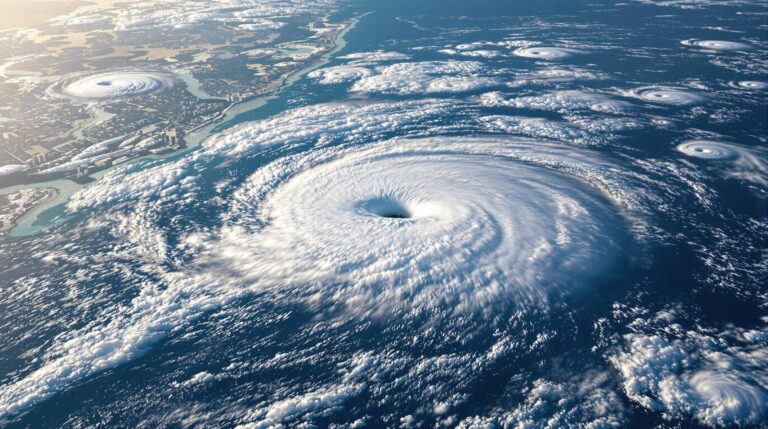Floridians are on alert as the state heads into peak hurricane season after three straight years of being impacted by major storms.
Meanwhile, the Florida Panhandle continues its recovery from Hurricane Michael that devastated the region as a Category 5 last October. Residents in the area are crossing their fingers that they will be spared this year as they continue rebuilding from the largest hurricane to hit the area on record.
“We are all hoping there won’t be another one this year,” said Karen Kirkland, owner of Kirkland Insurance Agency in Lynn Haven, Fla., a part of the Panhandle that was badly damaged by the massive storm that made landfall October 10 with 155-mph winds.
According to the Florida Office of Insurance Regulation, total estimated insured losses from Hurricane Michael had reached $6.6 billion as of June 28, 2019, with 84% of claims closed. The total number of claims between residential, commercial, flood and other lines was nearly 148,000 — 88,692 of which came from Bay County.”
“No one is coming to tell me they had too much insurance for Hurricane Michael”
Trey Hutt, owner of Hutt Insurance Agency in Panama City, Fla., said there were 1,900 claims from his agency’s 6,000 policyholders, equating to 8.5 years’ worth of normal claims activity from one storm. This year, his customers are much more willing to review their insurance coverage.
“No one is coming to tell me they had too much insurance for [Hurricane Michael],” he said. “People are reevaluating business income, building limits and the fine print of endorsements.”
2019 Hurricane Season Forecast:
The National Ocean and Atmospheric Administration has predicted a “near normal” hurricane season this year with nine to 15 named storms forecast. They predicted four to eight of those storms will become hurricanes and two to four of those will be major systems with winds of 111 mph or more.
Though this year’s hurricane season, which started June 1 and runs to Nov. 30, is not expected to be above average, CoreLogic’s Daniel Betten said it’s important people understand that there is a lot of uncertainty with hurricane forecasts.
“Last year [NOAA] called for five to nine hurricanes, which is about average, but we saw eight actually named hurricanes … so it was an above average year overall last year for named storms and on the upper end of NOAA’s forecast,” he said. “It definitely exceeded expectations.”
Betten said there was a moderate El Nino event this year and that is expected to weaken slightly over the fall which contributes to the slightly below season expected this year compared to last. However, sea surface temperatures in the Caribbean and the tropical Atlantic are above average.
“So, if a storm does form, if you have the right environment conditions above the water surface then the ocean is primed to help intensify the hurricanes,” he said.
There is also slightly above average activity expected from the West Africa Monsoons where a lot of hurricanes start.
Betten said the east coast of Florida is one of the most vulnerable areas of Florida, and the U.S., to storm surge because of hurricane’s coming off the Atlantic. CoreLogic’s 2019 Storm Surge Report says more than 2.9 million homes in the state are vulnerable to storm surge flooding.
“That’s one of the things that made Michael so surprising is that that part of the Panhandle is actually not known for having strong hurricanes,” he said.
Kirkland said most of her customers have responded to her yearly invitation to sit down with her and review their insurance policies and are increasing their coverage, adding coverage for other structures and dwelling coverage.
“People want to come in and actually talk,” she said. “I believe the insurance world has changed since [Hurricane Michael] because everyone is more aware of the benefits and certain coverages.”
Panhandle residents weren’t the only ones caught off guard by the intensity of Hurricane Michael. Meteorologists who tracked the storm were also surprised by how quickly the hurricane intensified, said Daniel Betten, principal scientist for CoreLogic. One week out nobody believed it would be a major hurricane.
One big lesson from Michael that those in hurricane-prone states should realize, he said, is not to count on having more than a couple days’ notice for a major hurricane to make landfall.
“Sometimes people get lulled into a false sense of security by hearing about a storm a week in advance,” he said. “Michael and Harvey are examples of storms that were very disorganized just a week before and then within one to two days intensified into major hurricanes.”
State officials and regulators are urging citizens and the insurance industry to be prepared.
Florida CFO Jimmy Patronis launched an initiative in June designed to encourage Floridians to prepare before a hurricane.
“While Floridians know all too well the devastation hurricanes can have on their lives, it’s easy to not take the threat seriously,” Patronis said. “An active [2019] hurricane season is predicted, with the possibility of up to four major hurricanes. As we saw with Hurricane Michael, hurricanes can form and strengthen quickly, leaving little time to prepare and evacuate.”
The PrepareFl.com website offers disaster preparedness information and resources for residents to get ready for the next storm, including an emergency preparedness toolkit, guide to inform consumers on insurance and financial preparation in the event of a natural disaster, and a guide to navigating the flood insurance claims process, among other information.
OIR said Hurricanes Hermine, Matthew, Irma and Michael impacted Florida “in their own unique way” and each storm over the past three years has given the state an opportunity to identify strengths in response efforts but also areas that could be improved.
“As a result, Florida’s ability to respond to these types of events continues to grow and strengthen and we expect the response from the industry to be strong should we experience a tropical weather event this season,” OIR said in an e-mail to Insurance Journal.
For their part, carriers operating in Florida say they are ready for whatever Mother Nature brings to the Sunshine State this year.
Capitol Preferred Insurance and Southern Fidelity Insurance, both headquartered in Tallahassee and owned by Jimmy Graganella, said a “Storm Center” page has been added to its company websites featuring preparation articles and a way for customers to file claims 24/7. Capitol Preferred, which has 70,000 policies in Florida, South Carolina and Louisiana, begins preparing for hurricane season in January of each year and has two call centers and more than 70 desk adjusters ready to respond to claims.
National carrier Chubb said it provides agents and brokers with risk management tips and loss prevention measures that can be shared with their clients to help before, during and after a storm to minimize loss from wind or floods.
Chubb clients have access to a client portal and app where they can opt-in for alerts that will signal severe weather and receive tips and guidance to minimize property damage, among other resources. Chubb homeowner clients with secondary homes in many states, including Florida, also have access to Chubb Property Manager where Chubb risk consultants will visit their property and conduct an exterior inspection to determine the home’s condition after a hurricane.
Kirkland and Hutt Insurance Agency owner Trey Hutt say they were mostly pleased with their carrier responses after Hurricane Michael, though there were some hiccups.
Kirkland said the many differences in policy language among admitted carriers was challenging, and she will no longer work with companies that don’t cover wind-driven rain or fences.
Hutt said overall, his carriers “behaved really well” but there were a few that didn’t, either with underprepared or poorly trained staff, or long delays in responding to customers. He plans to cut ties with at least one or two companies.
“Our frustration in general was it was pretty clear early on what [the carrier] responsibility was, and for the most part they paid what they owed, but they could have done it more quickly and with much less distress for clients,” Hutt said.
Kirkland said she would appreciate carriers giving agents better claims access so they can provide the customer more information during the claims process. As it is now, carriers provide limited information to agents on claims processing and payments.
“That’s one of the most frustrating things, probably for agents around the country too. That could be improved,” she said.
Flood Insurance Uptick
One positive that has come in the aftermath of Hurricane Michael and other recent storms is an apparent increase in the take-up rate of flood insurance, according to OIR data. The state’s private flood insurance market has grown 169% since 2017, OIR said, with private carriers writing more than 62,000 personal primary flood insurance policies in the state. There are now 29 private insurers writing flood coverage in Florida.
“The growth has been a testament to the partnerships and collaborative efforts of various agencies and entities, however, there is plenty of work to be done to close the flood insurance gap that currently exists in the homeowners market,” OIR said.
The National Flood Insurance Program had more than 1.7 million Florida policies in force as of Sept. 30, 2018.
As of July 1, regulated lending institutions are required to accept private flood insurance policies that meet the Biggert-Waters Act’s definition of private flood insurance, which could spur further growth in the market.
Florida also passed a bill this session requiring insurers to include certain language on homeowners insurance policies that do not include flood insurance coverage.
“We believe this an extremely important disclosure and through a continued collaborative approach to creating awareness on common insurance misunderstandings, we hope the number of homeowners who purchase flood insurance increases,” OIR said.
Florida-based carrier Capitol Preferred Insurance is one carrier that has seen an increase in interest for flood insurance.
“With each storm season trending more severe than the last, we’ve discovered our clients find comfort in adding flood insurance to their policies,” said Jimmy Graganella, president and CEO of Capitol Preferred Insurance.
Chubb said the company generally sees an increase in flood quote requests and the purchasing of coverage after hurricane season or other severe storms.
“Everyone is susceptible to this risk and needs to be educated about it and have the right insurance protection in place,” said Ana Robic, chief operating officer for Chubb Personal Risk Services.
Karen Kirkland of Kirkland Insurance Agency said she has written at least 30% more flood coverage this year than in previous years, mostly with the NFIP because policies are generally more affordable and offer better coverage.
“The agents around here have preached flood for a long time and now everyone understands why,” she said. “Once you go through something like this everyone understands the importance of the coverage.”
Report: Insurance Journal











